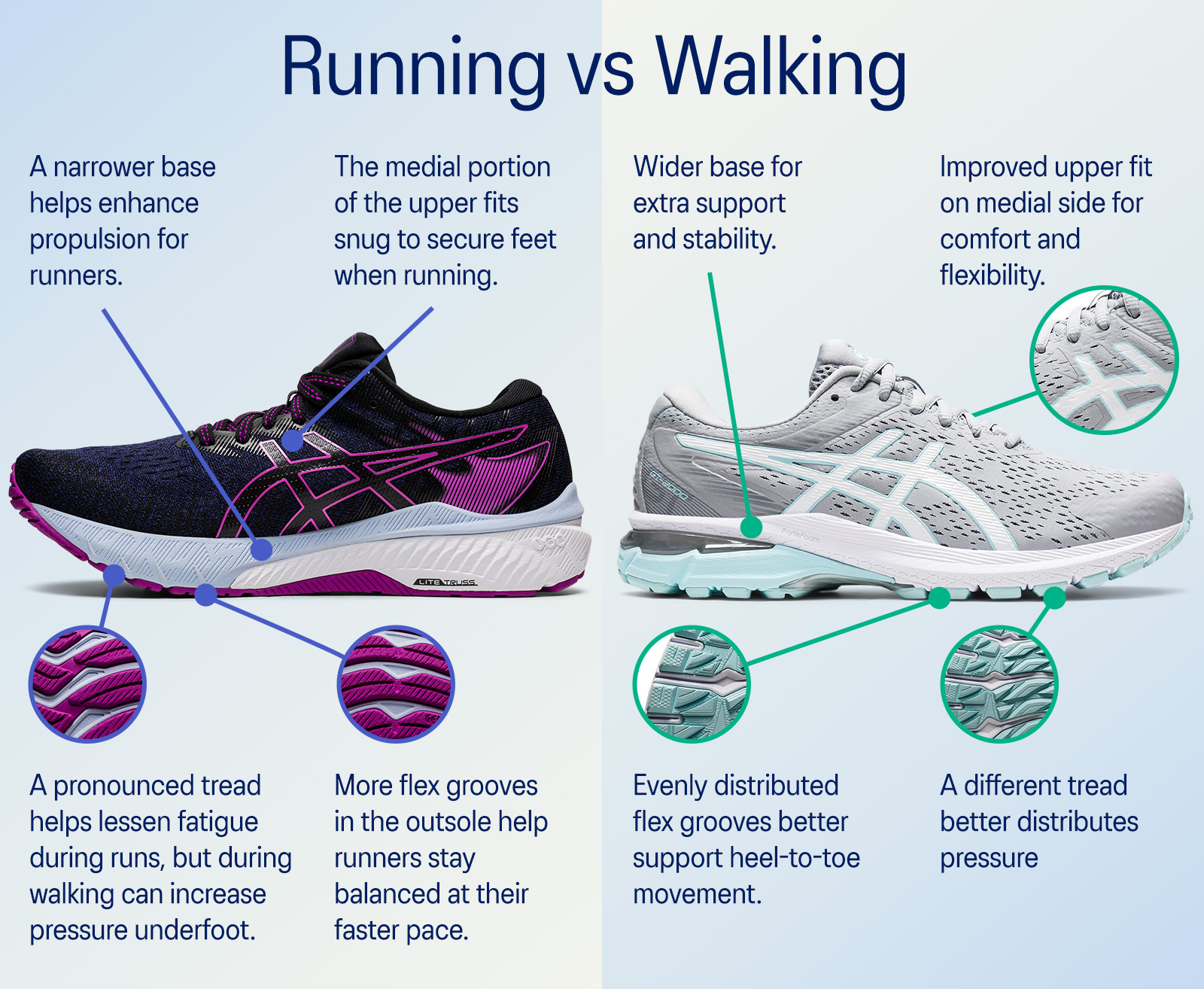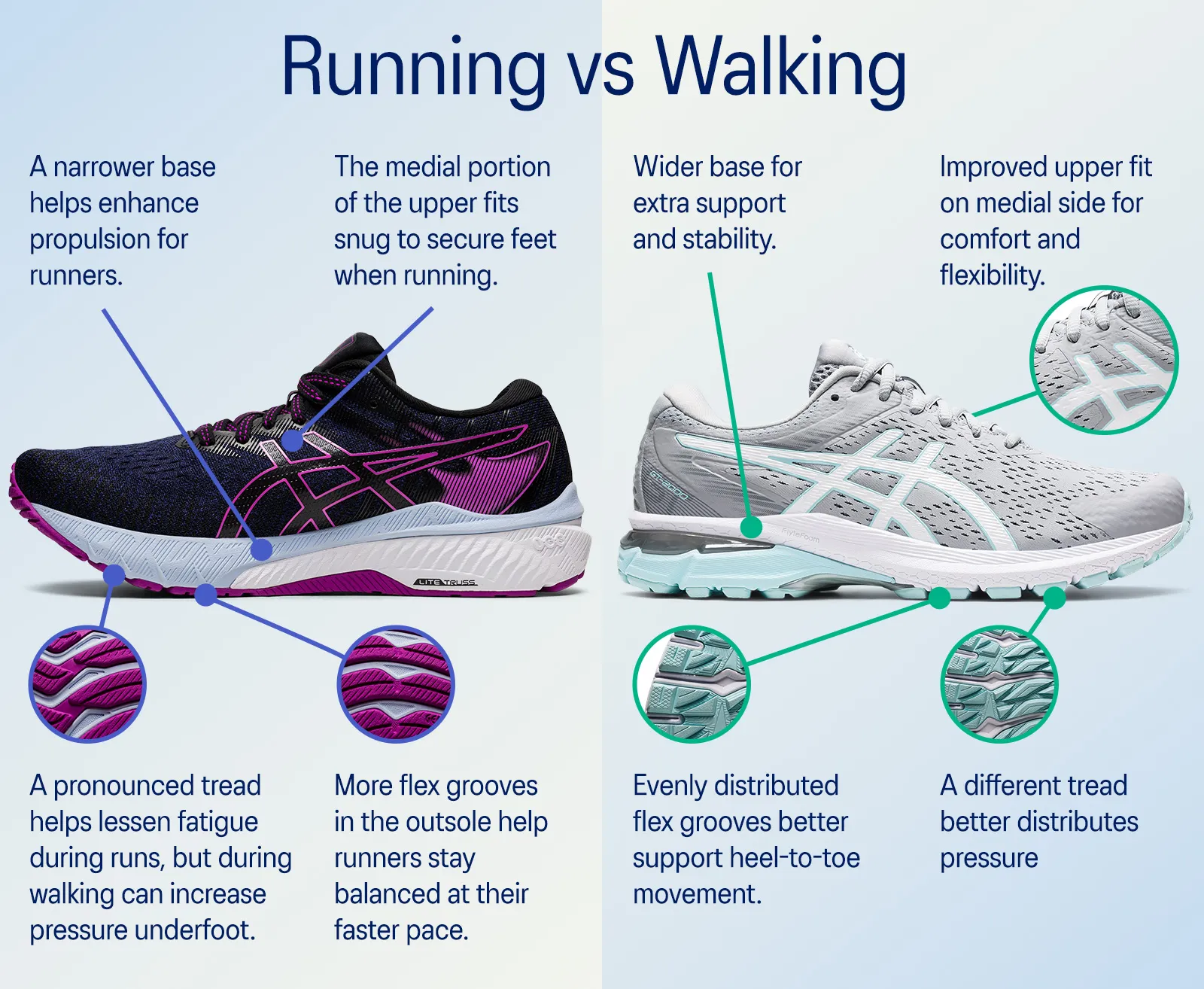Running vs Walking Shoes: Which Is Best for Your Fitness Journey?
Embarking on a fitness journey often begins with a simple step—choosing the right footwear. The debate between running vs walking shoes is more than a matter of preference; it’s a decision rooted in biomechanics, performance, and injury prevention. Whether you’re lacing up for a brisk walk or an intense run, the shoes you wear can define your experience. In this article, we’ll dissect the nuances of these two types of footwear, drawing from scientific research, expert opinions, and real-world applications to guide you toward the optimal choice for your goals. Let’s dive into the details without delay, as every step counts in your path to wellness.
The Fundamental Differences in Design and Function
When comparing running vs walking shoes, the first aspect to consider is their design philosophy. Running shoes are engineered to handle high-impact forces, as each stride can generate up to three times your body weight, according to studies from Harvard Medical School. This necessitates features like enhanced cushioning in the heel and forefoot, which absorb shock and reduce stress on joints. In contrast, walking shoes prioritize flexibility and support for a rolling motion from heel to toe, as walking involves a more distributed impact. For instance, the American Podiatric Association highlights that walking shoes often have a beveled heel to facilitate a smooth transition, whereas running shoes might include a stiffer midsole for energy return during push-off. This distinction isn’t just about comfort; it’s about aligning with the biomechanics of your activity. As noted by Dr. Casey Kerrigan, a renowned biomechanist, “The wrong shoe can alter your gait, leading to overuse injuries over time.” By understanding these design elements, you can avoid common pitfalls, such as using running shoes for long walks, which might cause discomfort due to excessive cushioning that impedes natural foot movement.

Biomechanics and Impact on the Body
Delving deeper into biomechanics, the choice between running vs walking shoes hinges on how your body interacts with the ground. Running is a series of leaps, with both feet leaving the surface simultaneously, creating a “flight phase” that demands rapid deceleration upon landing. Research from the University of Calgary explains that this generates high vertical forces, necessitating shoes with superior shock absorption—like those with gel or air pockets in the midsole. Walking, however, is a continuous contact activity, where one foot always remains on the ground, resulting in lower impact but requiring more stability for the heel-strike and toe-off phases. A study published in the Journal of Sports Sciences found that improper footwear can increase the risk of conditions like plantar fasciitis or shin splints. For example, using walking shoes for running might lack the necessary cushioning, leading to joint strain. As elite runner and author Matt Fitzgerald states in his book “80/20 Running,” “The right shoe complements your body’s mechanics, not fights them.” This perspective is echoed on platforms like Quora, where fitness enthusiasts share anecdotes of reduced knee pain after switching to activity-specific shoes. By prioritizing biomechanical alignment, you’re not just buying shoes; you’re investing in long-term joint health and performance efficiency.

Material and Durability Considerations
The materials used in running vs walking shoes play a crucial role in durability and performance. Running shoes often incorporate lightweight, breathable fabrics like mesh uppers to minimize weight and enhance airflow during intense activity. According to ASICS, a leading sportswear brand, their running models include carbon rubber outsoles for better traction and longevity, as repeated pounding wears down materials faster. Walking shoes, on the other hand, might use more leather or synthetic overlays for added structure and durability over longer, less intense use. A report from Runner’s World magazine cites that running shoes typically last 300-500 miles, while walking shoes can endure 500-700 miles due to lower impact forces. However, this isn’t just about mileage; it’s about how materials respond to stress. For instance, a YouTube review by certified podiatrist Dr. Brad Schaeffer emphasizes that “walking shoes with stiff soles can cause foot fatigue if used for running, as they don’t flex adequately.” By selecting shoes with appropriate materials, you’re ensuring that your footwear withstands the demands of your routine, whether it’s daily walks or marathon training. This knowledge empowers you to make cost-effective choices, especially when combined with seasonal discounts from retailers, offering up to 30% off on premium models.

Practical Scenarios: Matching Shoes to Your Activities
In real-world applications, the decision between running vs walking shoes should align with your specific fitness endeavors. If your routine involves high-intensity intervals or long-distance runs, running shoes are indispensable for their protective features. For example, a survey on Baidu Baike reveals that over 60% of runners reported fewer injuries when using shoes with motion control for overpronation. Conversely, if you’re into leisure walks or hiking, walking shoes offer the stability and comfort needed for varied terrains. Consider the insights from well-known websites like Healthline, which advise that hybrid activities might require a compromise—perhaps a cross-training shoe. But let’s not forget the economic aspect: many online stores provide discounted bundles, such as buying running and walking shoes together at a reduced price, making it easier to equip yourself for multiple scenarios. As you evaluate your needs, think about frequency and environment; urban walkers might prefer lightweight walking shoes, while trail runners need rugged running models. This tailored approach ensures that every step supports your journey, blending safety with satisfaction.
Expert Opinions and User Experiences
Gleaning insights from experts and everyday users adds depth to the running vs walking shoes discussion. On Twitter, fitness influencer Joe Wicks tweeted, “Invest in the right shoes—it’s a game-changer for consistency and results.” Similarly, Wikipedia entries on athletic footwear cite studies from Stanford University that link proper shoe selection to improved performance metrics. From Quora threads to Baidu Wenku documents, users often share how switching to activity-specific shoes alleviated chronic pain, such as one user who resolved arch issues by opting for walking shoes with arch support. Moreover, certified physical therapists on YouTube, like Bob Schrupp, demonstrate how shoe flexibility affects gait analysis. These collective voices underscore that this isn’t a one-size-fits-all matter; it’s about personalizing based on evidence. By heeding these accounts, you can avoid trial and error, potentially saving money and time while maximizing your fitness outcomes. Remember, the best choice is informed by both science and lived experiences, guiding you toward a sustainable routine.

Ultimately, the journey to selecting between running vs walking shoes is a personalized one, shaped by your body’s needs and fitness aspirations. Embrace this knowledge to step confidently into a healthier future, where every shoe supports your stride without compromise.
